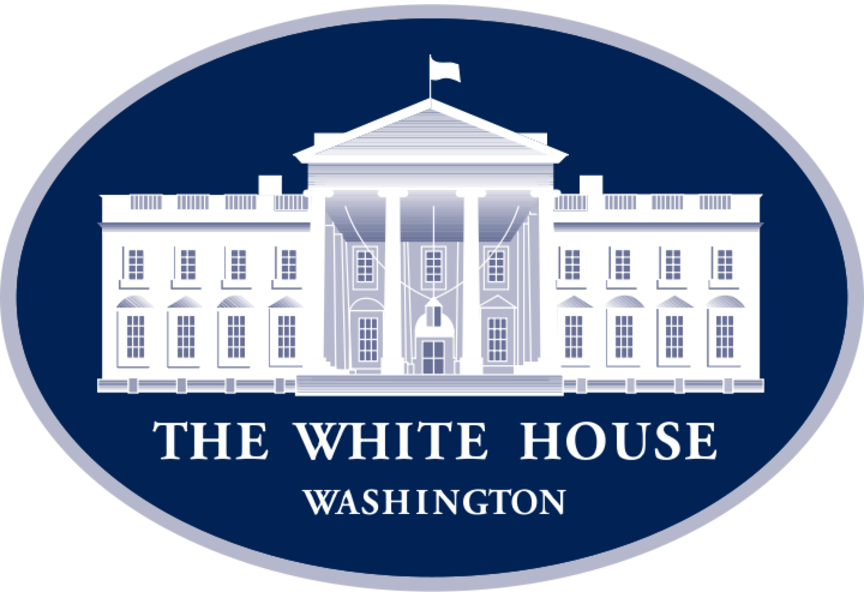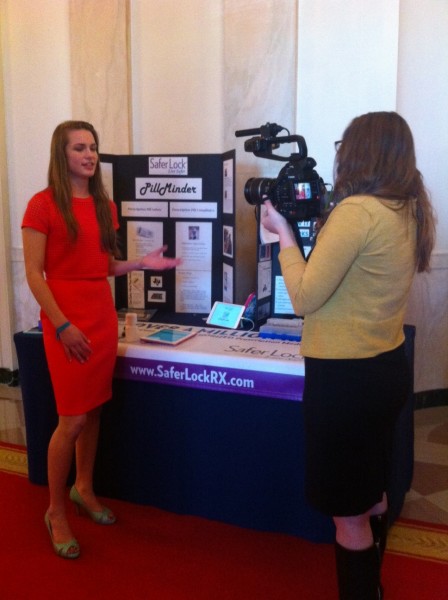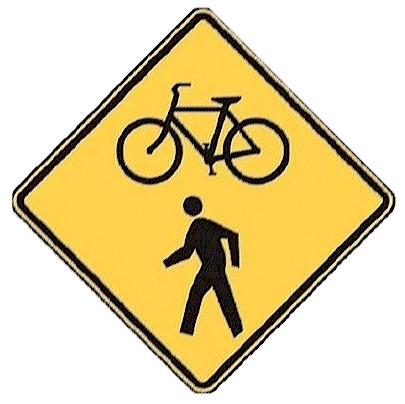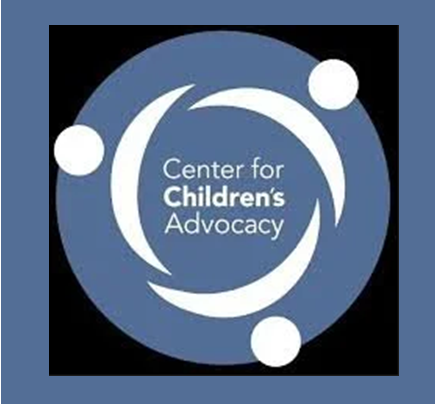Two Connecticut students were among the featured participants Monday as President Barack Obama hosted the 5th annual White House Science Fair, celebrating the student winners of a broad range of science, technology, engineering and math (STEM) competitions across America.
The high school students, whose ingenuity has been encouraged by their participation in the Connecticut Invention Convention (CIC), were Mallory Kievman of Man chester and Lilianna Zyszkowski of Southfield, MA, who attends the Indian Mountain School in Lakeville. Zyszkowsi invented a series of products, including most recently the PillMinder, a pill cap that reminds users when to take their medication. Kievman invented Hiccupops, the world’s first-ever lollipop to help suppress the hiccups.
chester and Lilianna Zyszkowski of Southfield, MA, who attends the Indian Mountain School in Lakeville. Zyszkowsi invented a series of products, including most recently the PillMinder, a pill cap that reminds users when to take their medication. Kievman invented Hiccupops, the world’s first-ever lollipop to help suppress the hiccups.
In addition to meeting with students and reviewing their innovations, President Obama announced new steps as part of his Educate to Innovate campaign to get more girls and boys, especially those from traditionally underrepresented groups, inspired and prepared to excel in the critical STEM fields.
This year is Lilianna Zyszkowski's fourth year with the CIC and her second year as part of the organization’s Next Step Inventor’s Program. Driven to invent things that help people, the 9th grader has developed a series of CIC award winning inventions that use networked sensors to "mind" things for people. Her first invention, created with a grandparent in mind, used capacitive touch sensors, LED's and a networked microcontroller to remind people to take their medications on schedule. The PillMinder alerts caregivers via Twitter and SMS whether the proper pills had been taken on time. As a CIC Next Step Inventor, Lilianna is working with a Silicon Valley firm, SaferLockRX.com, to bring the PillMinder technology to market as a pill cap that addresses pill safety and pill taking compliance.
The Connecticut Invention Convention (CIC) is an award winning, internationally recognized, 501(c)(3) educational organization, open to K-8 students statewide, designed to develop, encourage, and enhance critical thinking skills through invention, innovation and entrepreneurship. The CIC curriculum is standards-based and enables students to research, analyze and effectively focus on and solve their real-life problems.
This year marks the first time that two CIC students were selected to participate in the White House Science Fair. The Connecticut Invention Convention is the oldest kid invention curriculum and competition in the United States. Annually the CIC serves more than 15,700 students from more than 215 participating schools. Each year, the top 1,000 student inventors participate in the annual state convention held at the University of Connecticut. 
After enduring recurring bouts of hiccups over an extended period in the 7th grade, Kievman researched the physiology of hiccups and the associated folk remedies that have persisted over time. Hiccups are a nuisance for most, but also a little-known side effect of chemotherapy, kidney dialysis, anesthesia, and other medical treatments—affecting quality of life for already-suffering patients.
Kievman, now in 11th grade at Loomis Chaffee School, identified three approaches that worked to soothe her own hiccups: consuming apple cider vinegar, consuming sugar, and sucking on a lollipop. She combined all three approaches and coined her invention the “Hiccupop” – and is now a patented inventor (US Patent #8,563,030).
Her creation appears to work by over-stimulating a set of nerves in the throat and mouth that may be responsible for the hiccup reflex arc. She has contracted with a specialized facility in Texas to produce her product in volume, and the production line is already moving Hiccupops into the market.
Kievman and Zyszkowski were among 100 students from 30 states who were selected to present their inventions at the White House Science Fair. As part of the Fair, President Obama announced over $240 million in new private-sector commitments to inspire and prepare more girls and boys – especially those from underrepresented groups – to excel in the STEM fields. With those commitments, the President’s “Educate to Innovate” campaign has resulted in over $1 billion in financial and in-kind support for STEM programs. The initiatives announced Monday include a “Let Everyone Dream” campaign to expand STEM opportunities to under-represented youth and a Department of Education competition to create science and literacy themed media that inspires students to explore.
"It’s not enough for us to just lift up young people and say, great job, way to go," President Obama said. "You also have to have labs to go to, and you’ve got to be able to support yourself while you’re doing this amazing research. And that involves us as a society making the kind of investments that are going to be necessary for us to continue to innovate for many, many years to come."
In addition, the President announced that 120 universities and colleges have committing to train 20,000 engineers to tackle the “Grand Challenges” of 21st century and a coalition of prominent CEOs, Change the Equation, has committed to expand effective STEM programs to an additional 1.5 million students this year. The White House also recently launched “Untold Stories of  Women in Science and Technology” on the White House website.
Women in Science and Technology” on the White House website.
The White House Science Fair, including remarks to the students by President Obama, was live streamed from the White House. The White House website includes brief profiles of the students, including Kievman and Zyszkowski, and their innovations were featured in White House announcements during the day.
 Last year, Kievman delivered a keynote speech at the CT Invention Convention, and issued a challenge to the inventors: to develop and commercialize their products and to give back to the community. She has committed a percentage of the profits from Hiccupops to support programs like the CIC that encourage youth entrepreneurship and innovation.
Last year, Kievman delivered a keynote speech at the CT Invention Convention, and issued a challenge to the inventors: to develop and commercialize their products and to give back to the community. She has committed a percentage of the profits from Hiccupops to support programs like the CIC that encourage youth entrepreneurship and innovation.
Attendees joining President Obama and the students at the White House Science included Susan Desmond-Hellmann, CEO of the Bill and Melinda Gates Foundation; Mariette DiChristina, Editor in Chief of Scientific American; Jim Gates, Member of the President’s Council of Advisors on Science and Technology (PCAST); Dean Kamen, Entrepreneur, Founder of FIRST; Dan Mote, President of the National Academy of Engineering and Bill Nye, the Science Guy.
https://youtu.be/OvPEhk5v7nc





 poll analysis, it is pointed out that connecting with another parent who is awake in the middle of the night can help to counteract feelings of isolation. Asking for other parents’ recommendations can facilitate the choice of a new childcare provider. And hearing about strategies used by other parents can offer practical tips to deal with a toddler’s behavior problem.
poll analysis, it is pointed out that connecting with another parent who is awake in the middle of the night can help to counteract feelings of isolation. Asking for other parents’ recommendations can facilitate the choice of a new childcare provider. And hearing about strategies used by other parents can offer practical tips to deal with a toddler’s behavior problem. chester and Lilianna Zyszkowski of Southfield, MA, who attends the Indian Mountain School in Lakeville. Zyszkowsi invented a series of products, including most recently the PillMinder, a pill cap that reminds users when to take their medication. Kievman invented Hiccupops, the world’s first-ever lollipop to help suppress the hiccups.
chester and Lilianna Zyszkowski of Southfield, MA, who attends the Indian Mountain School in Lakeville. Zyszkowsi invented a series of products, including most recently the PillMinder, a pill cap that reminds users when to take their medication. Kievman invented Hiccupops, the world’s first-ever lollipop to help suppress the hiccups.


 Women in Science and Technology
Women in Science and Technology Last year, Kievman delivered a keynote speech at the CT Invention Convention, and issued a challenge to the inventors: to develop and commercialize their products and to give back to the community. She has committed a percentage of the profits from Hiccupops to support programs like the CIC that encourage youth entrepreneurship and innovation.
Last year, Kievman delivered a keynote speech at the CT Invention Convention, and issued a challenge to the inventors: to develop and commercialize their products and to give back to the community. She has committed a percentage of the profits from Hiccupops to support programs like the CIC that encourage youth entrepreneurship and innovation.

 Among the students participating in the project were William Pritchard, interaction design and project management; Somaiyeh Ghaffarnia, animation and character development; Sean Dexter, 3D animation; Kevin Richetelli, 2D animation; Samantha Menza, game design; Tom Lee, game design and music composition; and Tiffany Hoang, game design. Prtichard and Ghaffarnia began working on the project as undergrads and continued while pursuing their graduate degrees. The other students were undergrads.
Among the students participating in the project were William Pritchard, interaction design and project management; Somaiyeh Ghaffarnia, animation and character development; Sean Dexter, 3D animation; Kevin Richetelli, 2D animation; Samantha Menza, game design; Tom Lee, game design and music composition; and Tiffany Hoang, game design. Prtichard and Ghaffarnia began working on the project as undergrads and continued while pursuing their graduate degrees. The other students were undergrads.

 Charter Oak’s proposal would create an Experimental Site in financial aid that would offer aid to students for prior learning (established via portfolios and tests), with the aim of making a college degree more affordable and accessible.
Charter Oak’s proposal would create an Experimental Site in financial aid that would offer aid to students for prior learning (established via portfolios and tests), with the aim of making a college degree more affordable and accessible.


 Last month, a bipartisan group of 20 members of Congress
Last month, a bipartisan group of 20 members of Congress



 motorized transportation networks and safety. Communities that routinely collect walking and biking data, they point out, are better positioned to track trends and prioritize investments.
motorized transportation networks and safety. Communities that routinely collect walking and biking data, they point out, are better positioned to track trends and prioritize investments.
 “We were excited here in Connecticut to give our Girl Scouts the opportunity to participate in a pilot of Digital Cookie, a first-of-its-kind web platform that lets girls sell cookies from their own protected, personalized websites,” said Tiffany Ventura Thiele, Communications & PR Manager for Girl Scouts of Connecticut.
“We were excited here in Connecticut to give our Girl Scouts the opportunity to participate in a pilot of Digital Cookie, a first-of-its-kind web platform that lets girls sell cookies from their own protected, personalized websites,” said Tiffany Ventura Thiele, Communications & PR Manager for Girl Scouts of Connecticut.
 Officials stress that “because 100 percent of the net revenue raised through the Girl Scout Cookie Program stays with local councils, when you purchase Girl Scout Cookies you’re not only getting a delicious treat — you’re also making an important investment in your community.”
Officials stress that “because 100 percent of the net revenue raised through the Girl Scout Cookie Program stays with local councils, when you purchase Girl Scout Cookies you’re not only getting a delicious treat — you’re also making an important investment in your community.”


























